What to see at Rencontres d’Arles 2025, questioning power structures in the state and family
Suppressed memories resurface in sharply considered photography at Rencontres d'Arles 2025. Here are some standout photographers to see
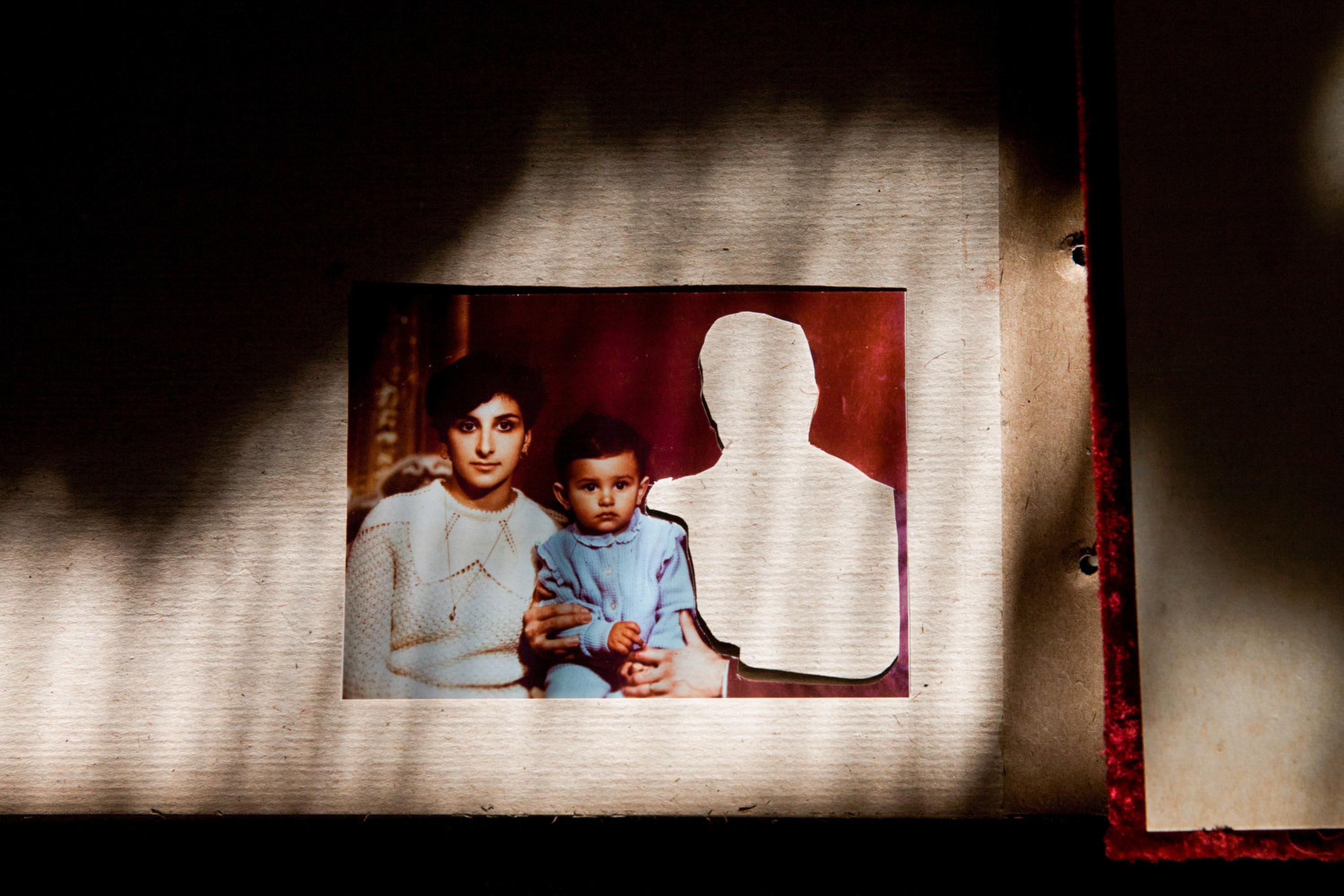
White sneakers up in the air, a man freestyles on the floor of a university student union. A group of young black men and women looking dapper in denims and T-shirts look on, amused and excited. This photograph captures one among the many dance parties that fuelled the Black and Soul movements in Brazil’s city of Belo Horizonte. Artist and researcher Guilherme Cunha chanced upon these photographs while collecting oral narratives and visual materials from the residents of Serra, a favela in the city, whose contributions in building the city have been erased. It’s a rebellion of collective memory that resurfaces as images in Cunha’s curated exhibition ‘Retratistas do Morro’ at Croisière, part of the Rencontres d’Arles 2025 photography festival (7 July – 5 October), which foregrounds lens-based disobedience amidst the turbulence and far-right sympathies of the present.
Looking at the portrait of a girl in double-belted white trousers, that have been rolled up to show sheer socks and shoelaces tied up like those of ballet pointe shoes, Cunha recalls meeting Dona Ana Oliveira, who had been guarding these photographs for more than 60 years. ‘She and her husband were friends with two photographers that worked in the favelas,’ says Cunha. ‘It was an epiphany, as I’ve never seen images like these anywhere. Ana said their work wasn’t known outside of the community, and they photographed everything – marriages, baptisms and even funerals.’ It was Oliveira who introduced Cunha to the photographers, among whom were João Mendes and Afonso Pimenta, whose works are currently on view in Arles. I look at a photograph by Pimenta of a birthday where children sing around a table of Coca-Cola and crisps – so reminiscent of birthdays across cultures right after globalisation.
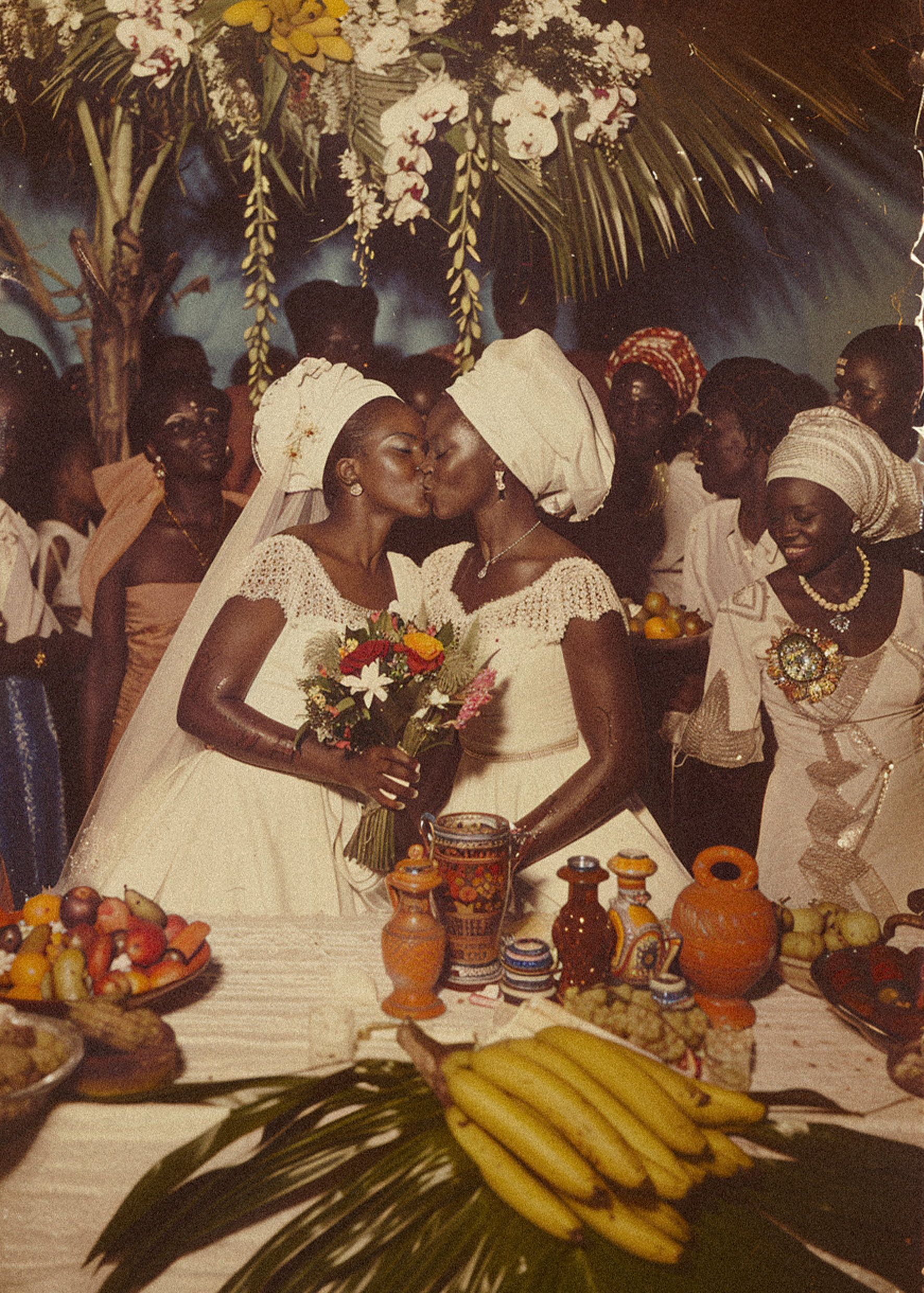
Mayara Ferrão. The Wedding, from The Album of Oblivion, 2024
It's this way of rewriting history that artists at the ‘Ancestral Futures’ exhibit are also embracing, among them Lakapoy Collective, which has been collecting self-photography by the Paiter-Suruí people in the Brazilian Amazon – a phenomenon that started after cameras arrived in the community with first contact in 1969. ‘It’s a shift in the way we look at Indigenous people in Brazil,’ says curator Thyago Nogueira, ‘as most archives were made by anthropologists and travellers who erased the ambiguities of representation.’ After one photographer from the collective started looking at his mother’s photographs, she pointed him towards more, among extended family.
There is something extremely contemporary about these photographs, like three children in sunglasses, staring unsmilingly at the camera. Intriguingly, the images capture the present as well as the past, as they’re constantly being manipulated. Someone who committed a homicide has been scratched out with a devil’s horn and a tail inscribed around them. ‘It’s almost like a family album as everyone knows each other,’ notes Nogueira.
In the same show, a different kind of family album is being conceived by Mayara Ferrão, whose portraits of Black lesbian women kissing – such as one of a couple getting married in a Candomblé wedding (Candomblé being an Afro-Brazilian religion) – hang in a Trinitarian church. ‘I have barely seen any images of love between Black women,’ says Nogueira, and Ferrão attempts to programme such visuals into existence, constructing images using generative artificial intelligence. ‘There was a lot of debate in Brazil about Mayara’s work, as people said [the images] were erasing the violence of the past,’ Nogueira adds. ‘She’s only trying to fill the gaps of images from Brazilian history written by masculine hands.’
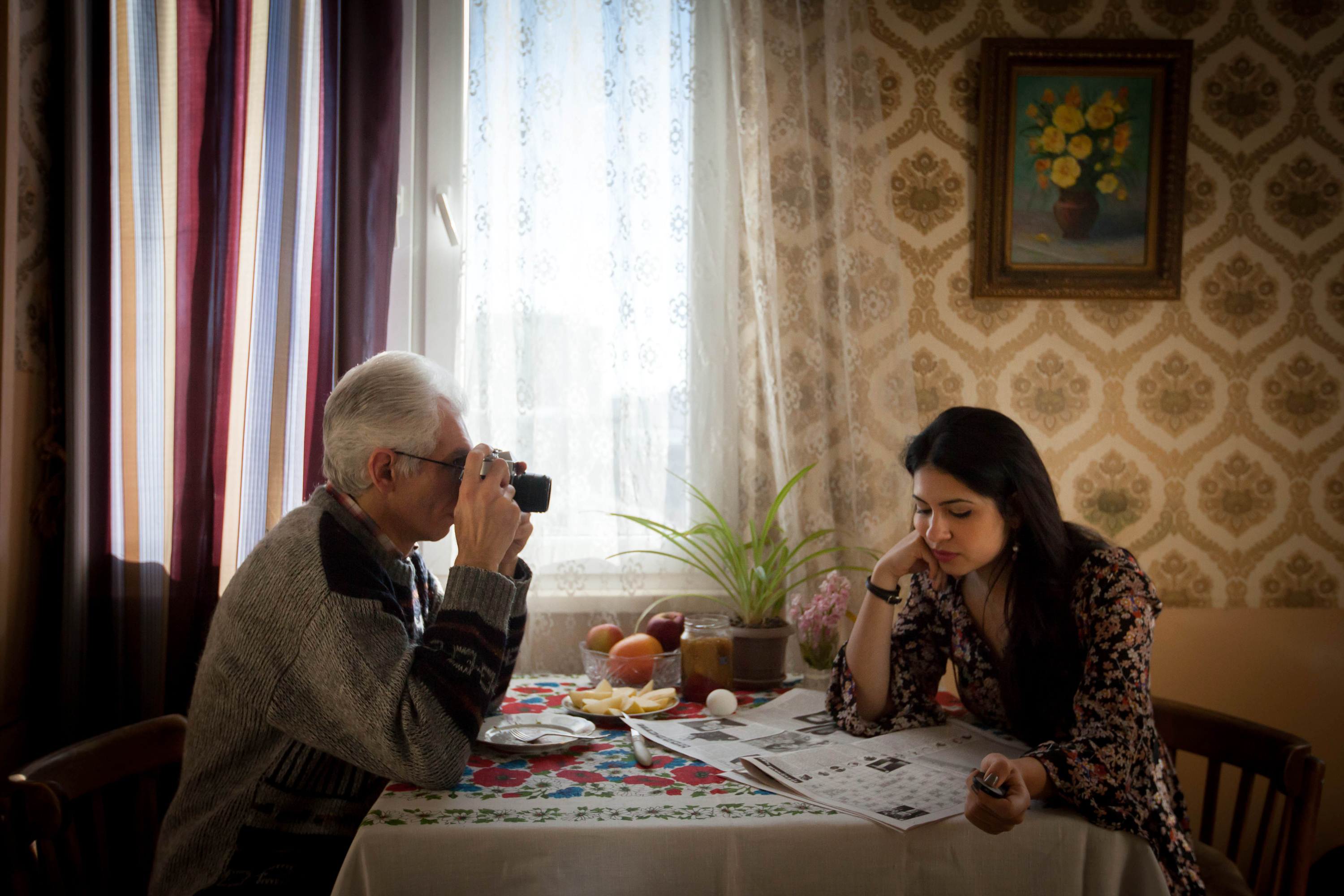
Diana Markosian. Mornings with You, Father series, 2014-2024
The blurry images that Diana Markosian’s father took while she was a child have turned into vague blobs of pixelated colour. She discovered these images and his photography practice 15 years later, after travelling to Armenia with her brother to look for him. ‘We spent many days searching different neighbourhoods and my brother potentially remembered where my father lived,’ says Markosian. ‘It’s surreal we somehow found him.’ The exhibit ‘Father’ is a diaristic trajectory of navigating a relationship with a man with whom she was also upset.
In one photograph, he’s looking at her through the camera – which really became a device for each of them to try to understand the other through a shared practice. It led to a co-authoring of this relationship and diary with her father’s fresh photographs alongside Markosian’s own.
Receive our daily digest of inspiration, escapism and design stories from around the world direct to your inbox.
Camille Lévêque is another artist who questions the implications of the father figure, in ‘In Search of the Father’. ‘The family album is almost exclusively staged,’ she reflects. ‘It raises questions about [the images’] intended purpose: are we posing for ourselves or others?’
Lévêque has gathered several thousand family photographs, spanning the course of a century, from flea markets and online auctions. She distorts the patriarch’s facial features, presenting the illusion of a single meaning or their absence altogether. The artist looks for repeated acts of paternal affection in images, like the holding of a child, or objects fathers are associated with – or how women with the same name as her feel about inheriting their name from their fathers. ‘It allows me to question his role,’ she says. ‘As family structures have moved beyond the traditional nuclear family.’
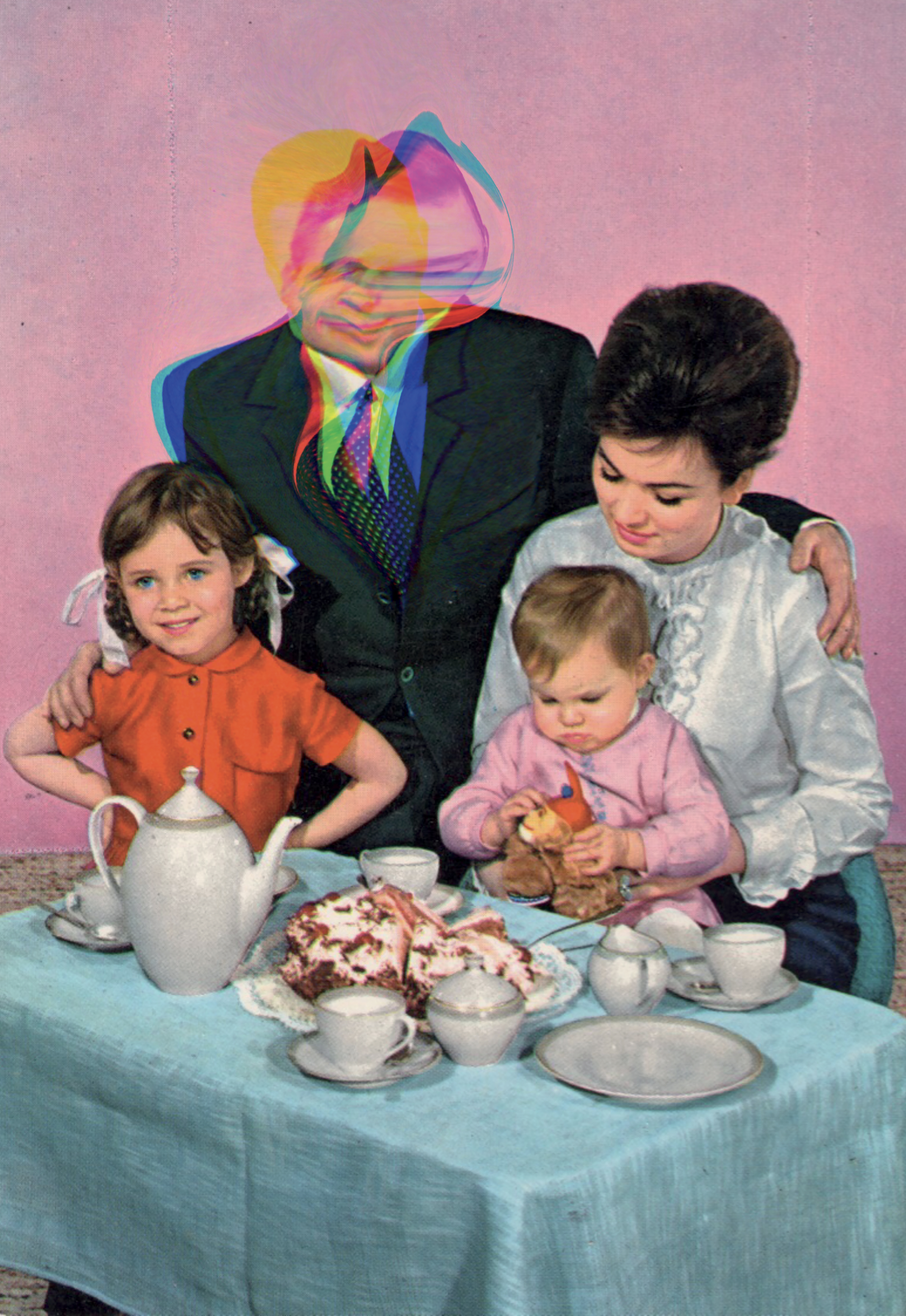
Camille Lévêque, Glitch, 2014
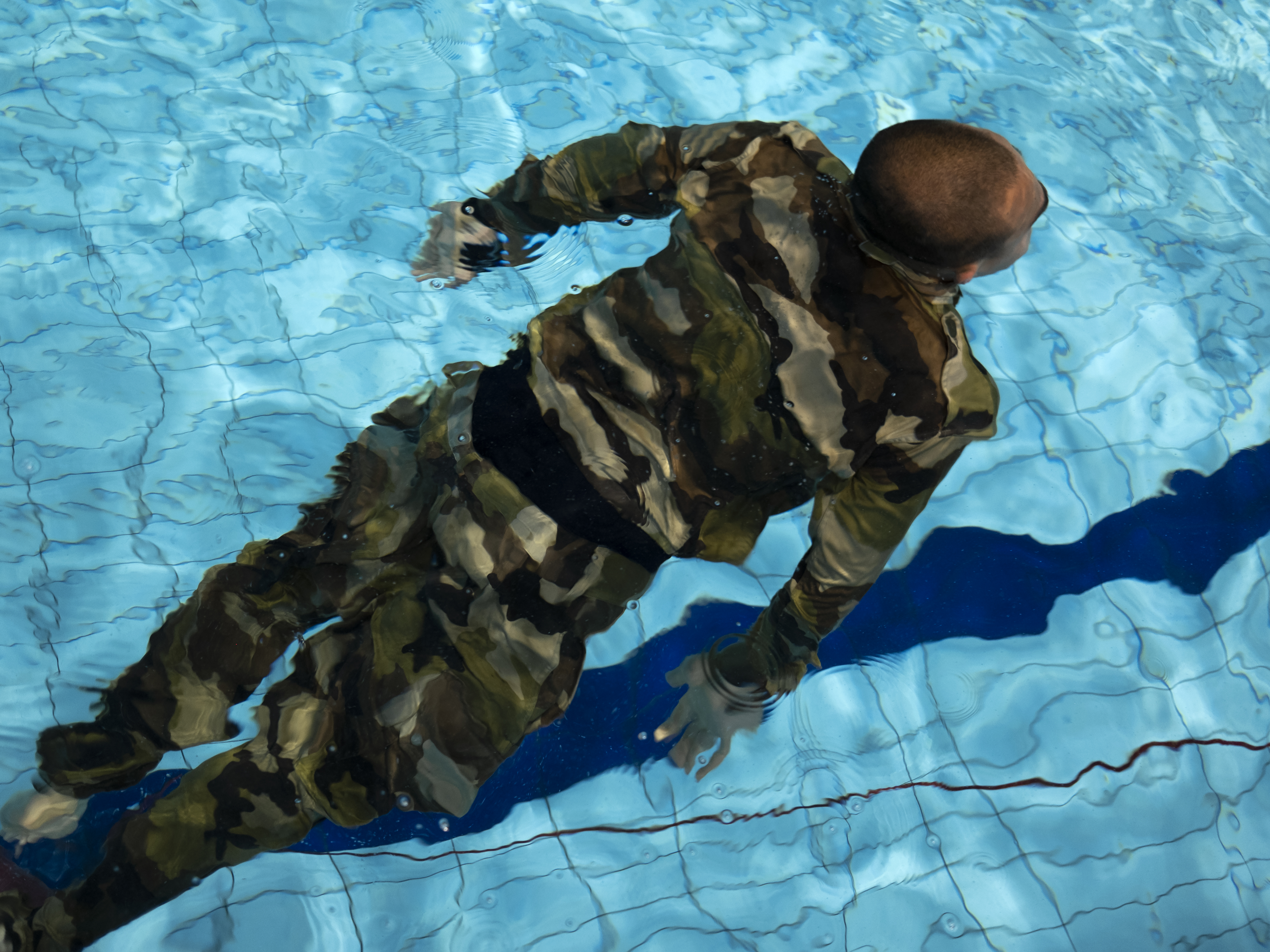
Julie Joubert, Patria Nostra series, 2023-2024
Julie Joubert follows a similar line of questioning in ‘Patria Nostra’, photographing young boys who’ve signed up to be in the French Foreign Legion. A complete picture of their faces is never achieved; they remain perennially concealed through a lathering of shaving cream on their chins or a gun overshadowing their lowered heads – the object having come to define who they are, and possibly influence their choice of tattoos, like a gun on their chest.
Shortlisted for the 2025 Discovery Award Louis Roederer Foundation, Joubert gained access to seven regiments through her father-in-law, who was a high-ranking legionnaire, says the exhibition's curator, César González-Aguirre. As in her project ‘Mido’, when she was working at rehabilitation centres for young people and photographed a young man caught between prison and wishing to be a model, she probes the individual desires often masked by the anonymity of a group – such as through an intricate back tattoo of Mary weeping blood.
Another contender for the Discovery Award, Zuzana Pustaiová, has been working with narratives propagated around the Mochovce Nuclear Power Plant in Slovakia, where she lives. Growing up with narratives of safety generated around the plant by so-called instruments of truth like newspapers, Pustaiová resorts to blurring the boundaries between fiction and truth in generating her counter-narrative. Because of legal restrictions prohibiting photographing the plant, Pustaiová works with pre-existing images, editing them to develop her narrative while pointing to its very artifice as something staged and collaged. ‘The project unironically refers to the undistinguishable mixture of opinions based on intuition, assumptions, emotional statements and even false information with factual knowledge,’ notes González -Aguirre. ‘For Pustaiová, fiction is a key ingredient to understanding contemporary public and private life.’
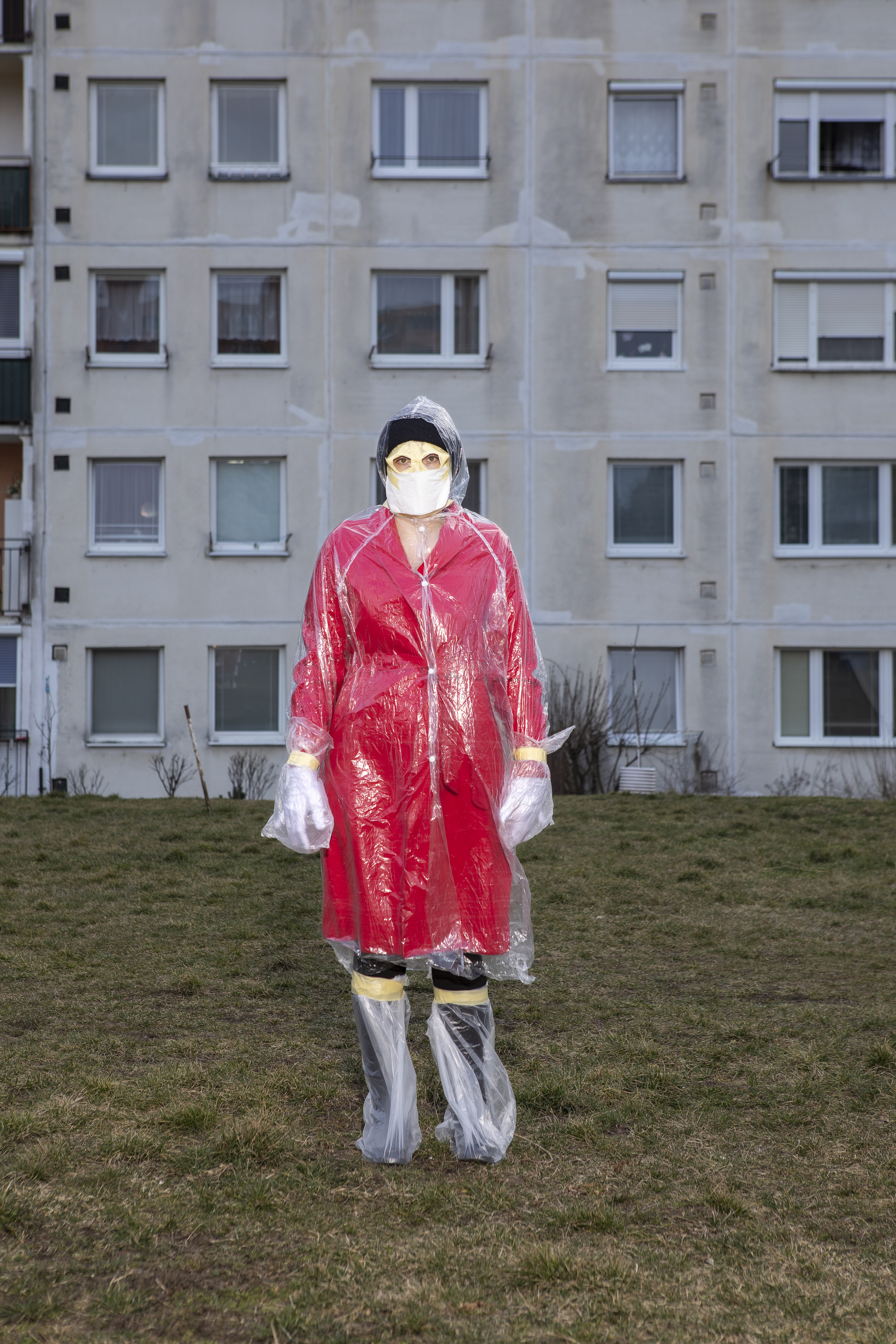
Zuzana Pustaiová. Model Situation, 2023
There is a particular focus at this year’s Rencontres d’Arles on projects with an explicitly investigative methodology. ‘I am from Mexico City, an oasis in a country immersed in war,’ says González-Aguirre. ‘In different latitudes, we’ve stopped trusting politics and the mass media as spokespersons of reality and nowadays, the artist and the photographer are detectives who navigate between the hidden, the denied and the unsaid.’ Like Pustaiová resorting to pre-existing images on digital platforms, Carine Krecké first discovered someone had uploaded photographs of genocide-struck Arbin in Syria under the Assad regime to Google Maps in 2018. ‘You would not expect to find war images there,’ she recalls. ‘They gave me access over an entire city I had never heard of. The narrative by the regime spoke about liberation, but in reality, it was something else.’
The uploader was a Google Local Guide – one of many who were leaving information on maps – who was also very active on social media, Krecké realised. However, they disappeared after a few weeks. There was another person posting about the genocide, but from the point of view of being Assad’s friend. ‘It was extremely deranging to read that stuff,’ admits Krecké. Taking her interactions with and following these individuals for over six years, she’s fictionalised them into an absurdist dialogue where they goad each other into questioning their position and responsibility.
There is a level of abstraction to this that leaves us with more questions than answers. The project, ‘Losing North’, won Krecké the 2025 Lët’z Arles Luxembourg Photography Award. Perhaps the artist is also questioning how we are to look at war, when we scroll through her book to see pages of satellite images of the areas she was observing, not totally sure what we are looking at. Perhaps it’s this feeling of confusion she wants to highlight. ‘This is not a project around the Syrian War,’ she says. ‘Because I am not qualified to talk about it. It’s just my experience of finding these images and getting obsessed with the inquiry.’ She almost replicates this feeling in small silos of video installations, echoing the way we see war on digital devices today.
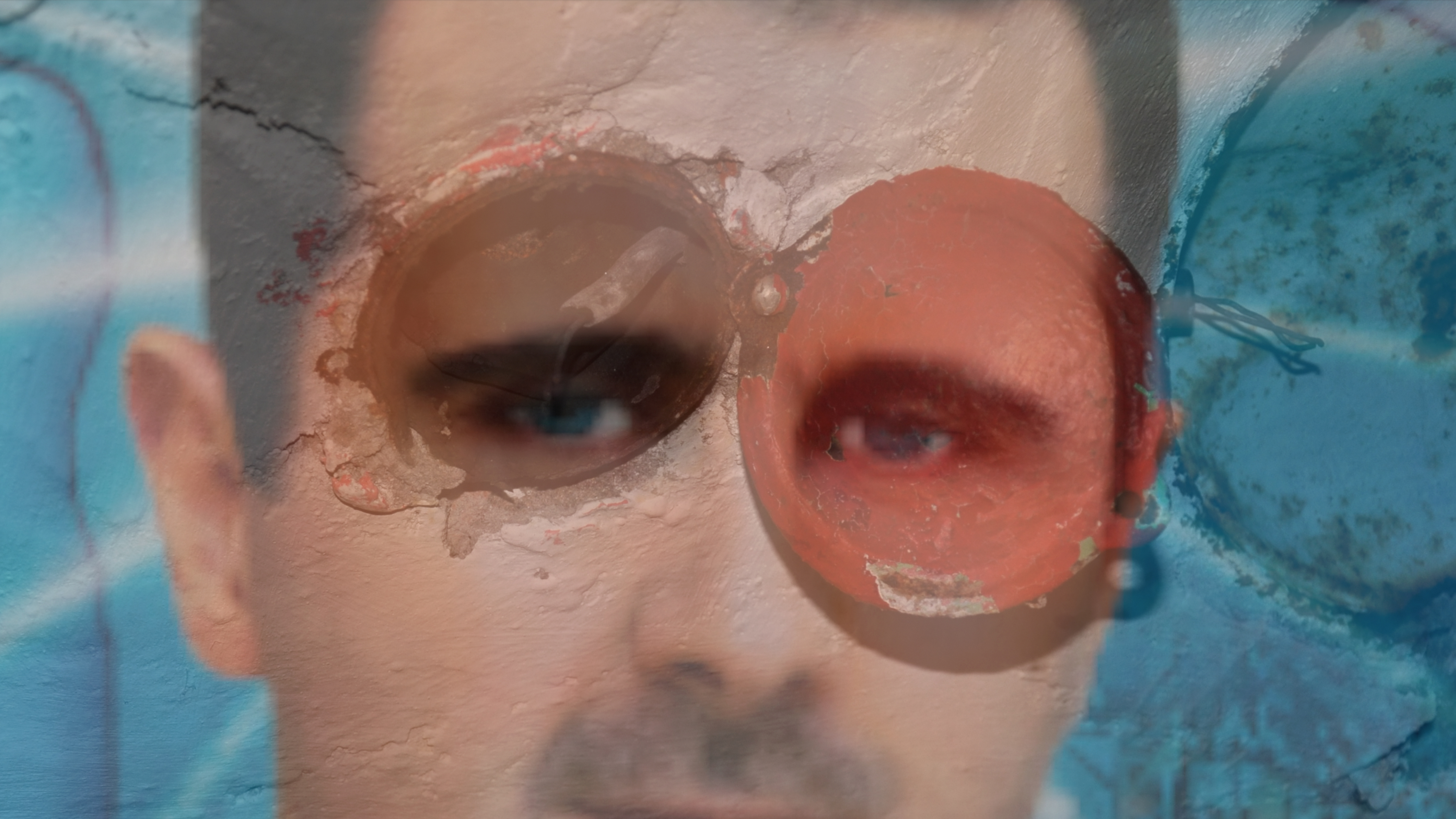
Carine Krecké, Untitled #7, 2024, excerpt from Lend Me Your Eyes (The Partisan), video, 2025
An installation of a flying eagle is balanced atop a memorial painted with the American flag and the word ‘Faith’ in cursive. This was Balsam Valley in Maine and Karen Knorr recalls encountering more of such reminders to pledge allegiance to the flag along the motorway in Maine. ‘It’s the acceptable patriotism,’ she says. ‘These were created after 9/11 when there was a surge of people putting flags in their windows. I’ve never seen as many flags in a country.’ The act persists as we see numerous flags hanging from the usual white neoclassical houses – one with a pick-up truck before it, also painted with the flag. ‘That’s the best-selling truck in America,’ says Knorr, “a symbol of male American identity.’
In ‘US Route 1’, Knorr and Anna Fox were following the eponymous route that the photographer Berenice Abbott had taken for her great American road trip, in the mid-20th century – photographs of which were rejected by numerous publishers, and Abbott’s being a lesbian did not help. Cruising from around Trump’s first presidency to after his re-election, Knorr and Fox follow Abbott’s route but they don’t stop at the same places she did in their modern interpretation of the country.
Abbott photographed bright street signs and rows of taxis with their meters, all of which were signs of the growing capitalism in America. ‘She was photographing the development of consumerism,’ says Fox, ‘and critiquing that.’ Now, American hoardings consist of anti-abortion SOS calls printed with Jesus’ face at Fort Pierce. Looking at Knorr and Fox’s photograph of a large Dollar Tree sign, Knorr notes how food or restaurant options in the US are dominated by corporations like Taco Bell or McDonald’s. ‘It’s difficult to have unprocessed food in America if you don’t have money,’ she says.
The Loring Air Force base has been photographed in the background of a field of flowers, beautifully hiding its nefarious past of hiding nuclear weapons underground. Incidentally, it also generated a community around the airbase that lost their employment after the air force left. ‘They’re thinking of reopening it now,’ says Knorr. ‘Small towns are really struggling to keep communities together, with farming being taken over by big corporations.’ In Knorr and Fox’s book, US 1: After Berenice Abbott, they include a photograph of an insidious painting hanging in a B&B in Swansboro, depicting a Black man and a European talking in the countryside. ‘There is a fear of diversity in small towns, and you rarely see a Black face,’ says Knorr. A dinghy shed in White City doubles as a firearms training centre, once again with the flag flying high.
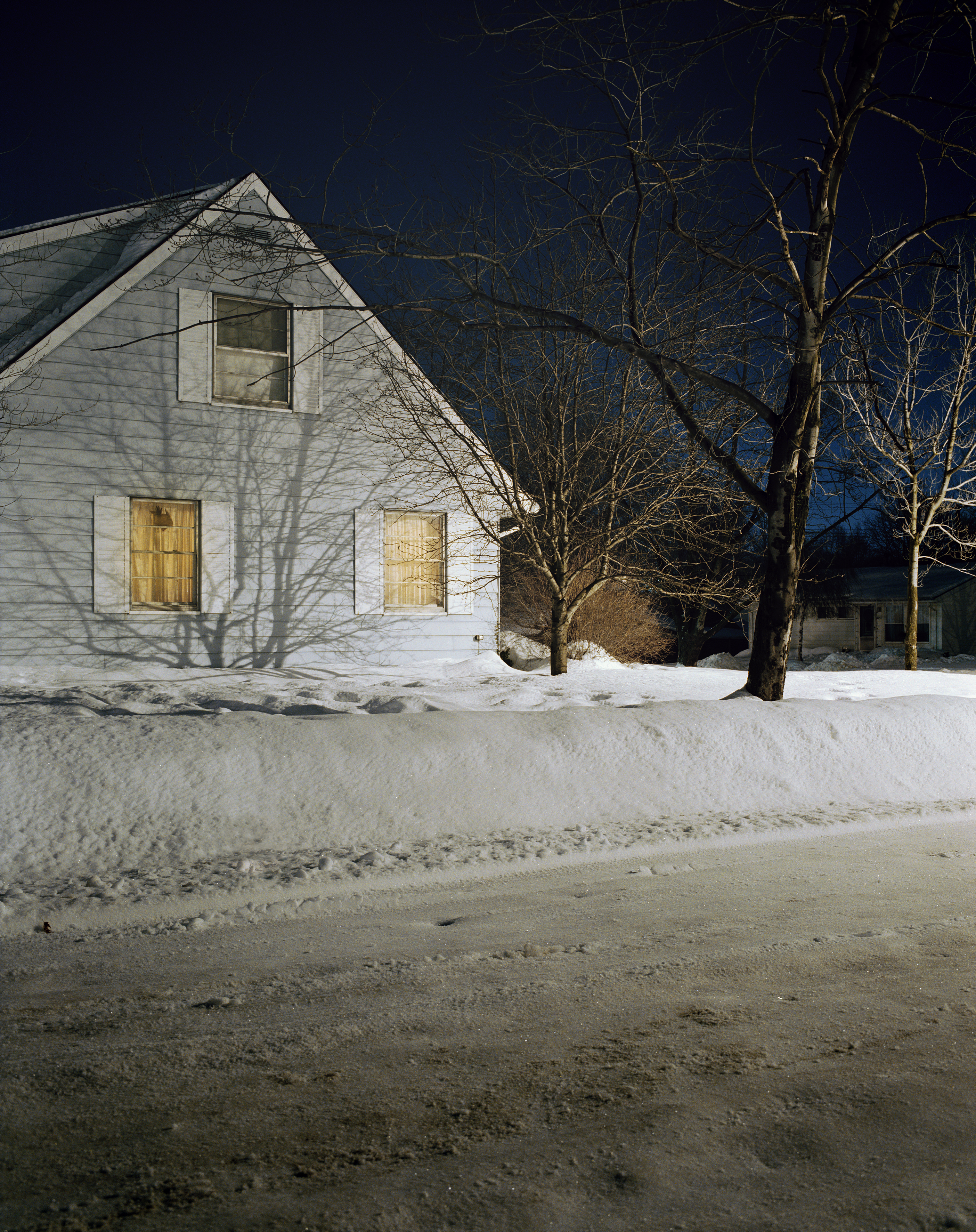
Todd Hido Courtesy of Galerie Les filles du calvaire
Todd Hido’s photographs of solitary houses on silent streets without a soul in sight never fail to evoke cinematic eeriness and a vague sense of familiarity. Their openness for the viewer’s memories and feelings to imprint on them is what remains fascinating after all these years. Hido doesn’t particularly select spaces for that reason, although he’s admitted previously, some of those places reminded him of suburban Ohio, where he grew up. ‘I was sorting through my feelings about my childhood and reflecting on my memories of my neighbourhood,’ Hido recalls. ‘There’s certainly melancholy upon my reflection of what was a complicated time – there’s a sense of longing and loss embedded in those images for me as well.’ His figure-based photography is different, however, with a found-footage quality to it, as if taken by analogue camera and then abandoned. ‘I often work with a person over and over, and one of my longest collaborations has been with a friend Khrystyna,’ he says. ‘I think we were both revisiting something in our individual histories.’
Rencontres d'Arles 2025 is on until October 5, rencontres-arles.com
Upasana Das is a freelance writer working on fashion, art and culture. She has written for NYT, Dazed, Interview Mag, Vogue India and Harper's among others.
-
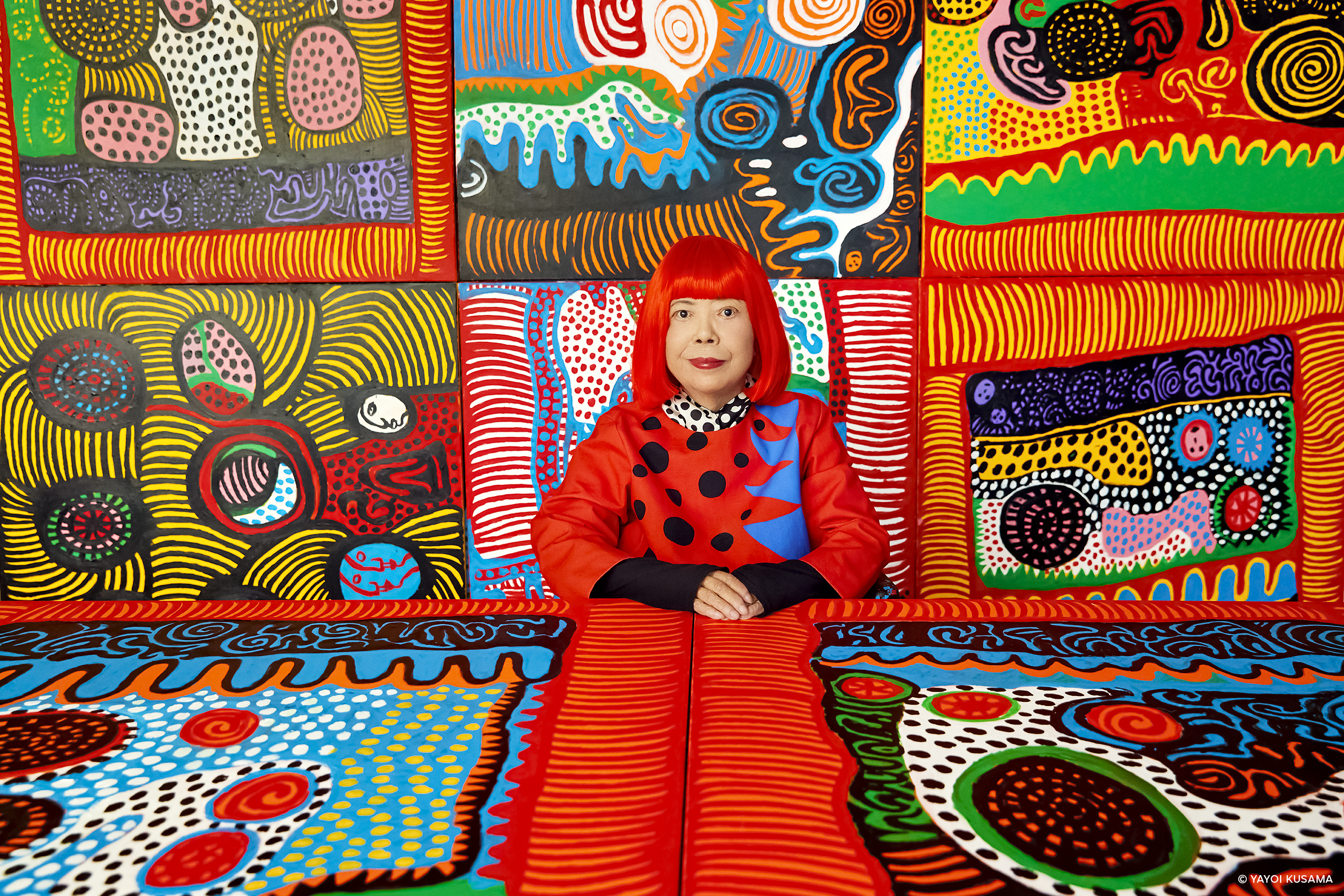 Modern masters: the ultimate guide to Yayoi Kusama
Modern masters: the ultimate guide to Yayoi KusamaThroughout her career, Japanese artist Yayoi Kusama has created an entirely new genre of hallucinatory, immersive and playful art.
-
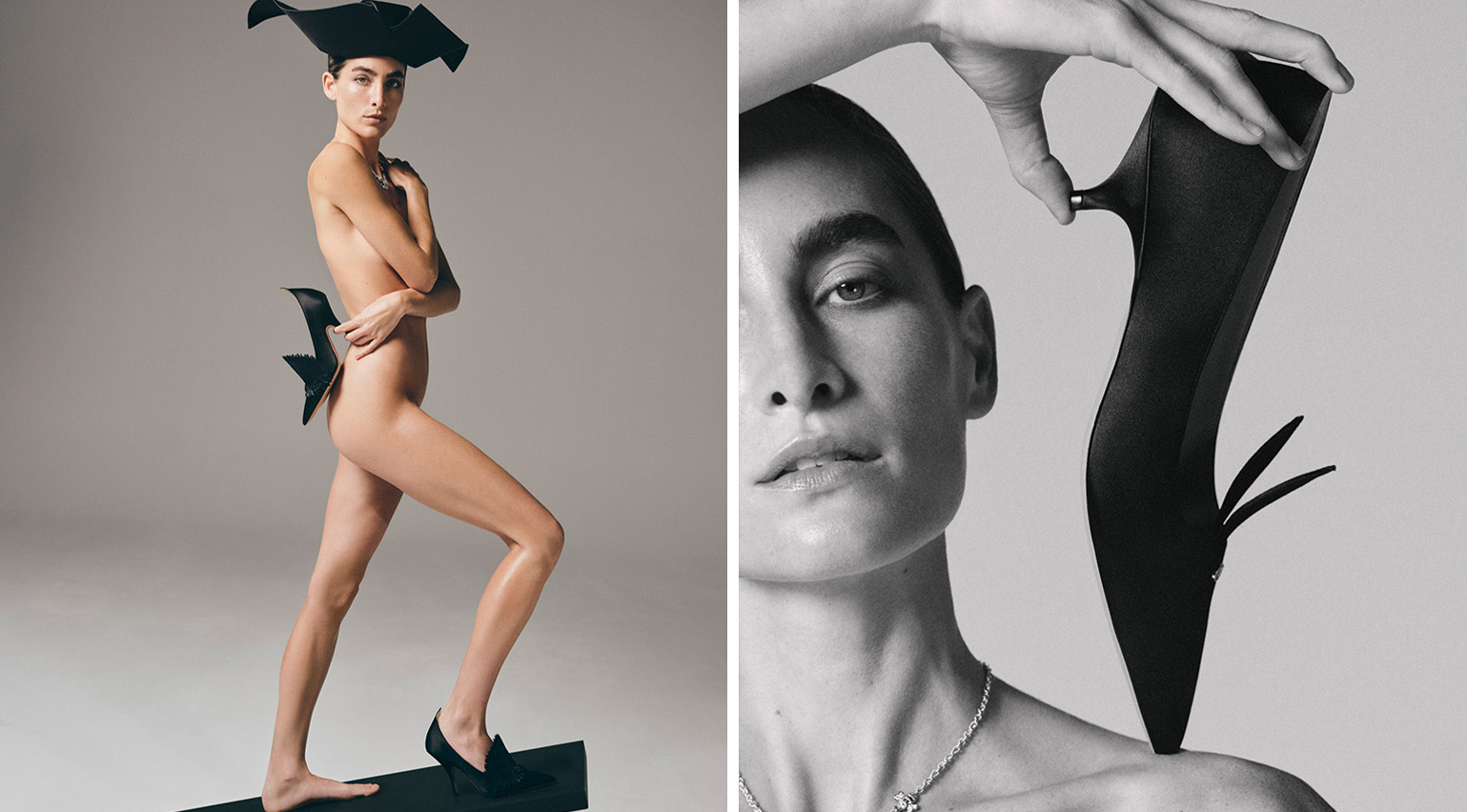 Zooming in on Jonathan Anderson’s first accessories collection for Dior
Zooming in on Jonathan Anderson’s first accessories collection for DiorWallpaper* takes a closer look at the accessories which appeared as part of the Northern Irish designer’s first womenswear collection for the house, which debuted in Paris in September
-
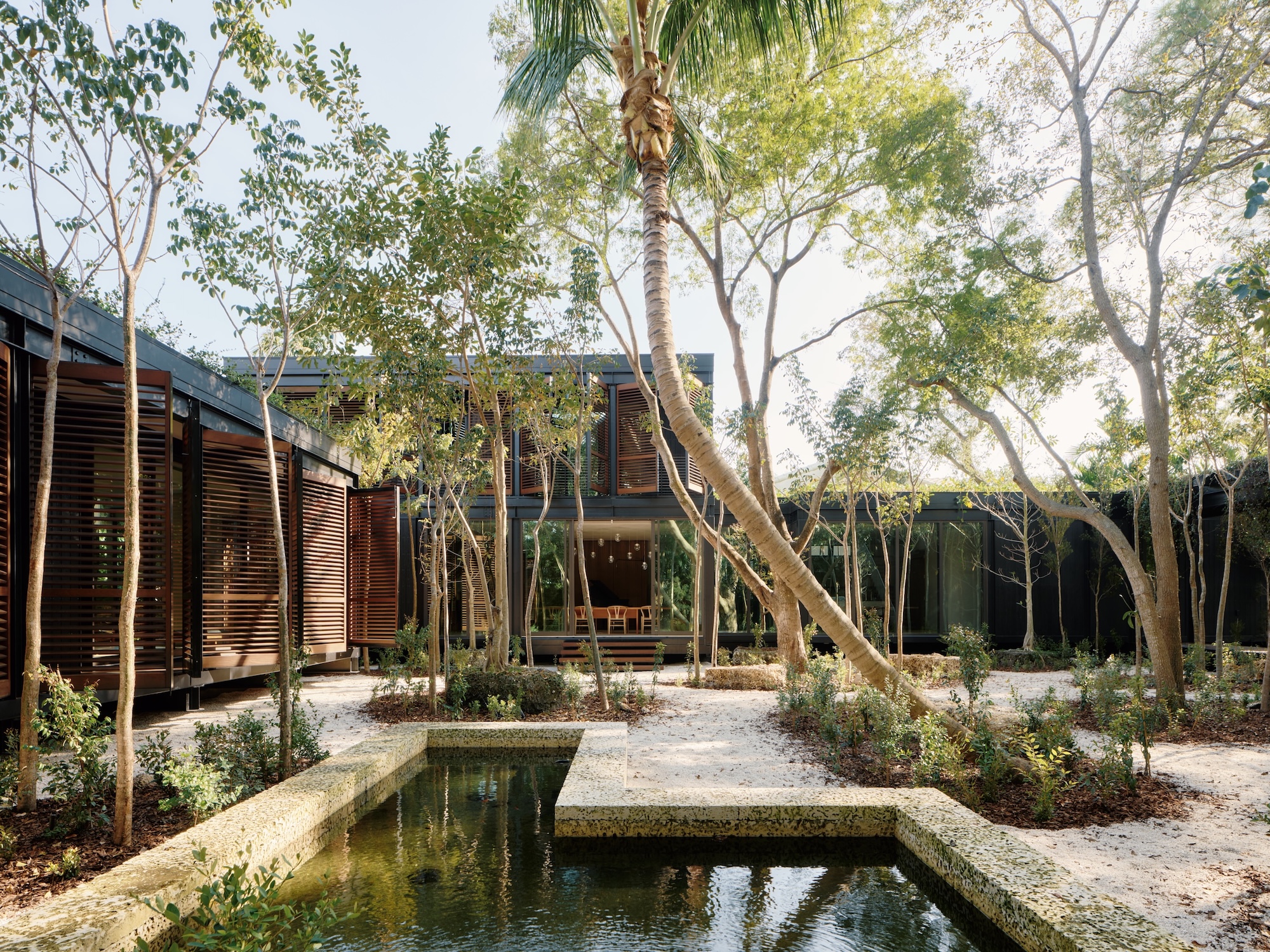 This ethereal Miami residence sprouted out of a wild, jungle-like garden
This ethereal Miami residence sprouted out of a wild, jungle-like gardenA Miami couple tapped local firm Brillhart Architecture to design them a house that merged Florida vernacular, Paul Rudolph and 'too many plants to count’
-
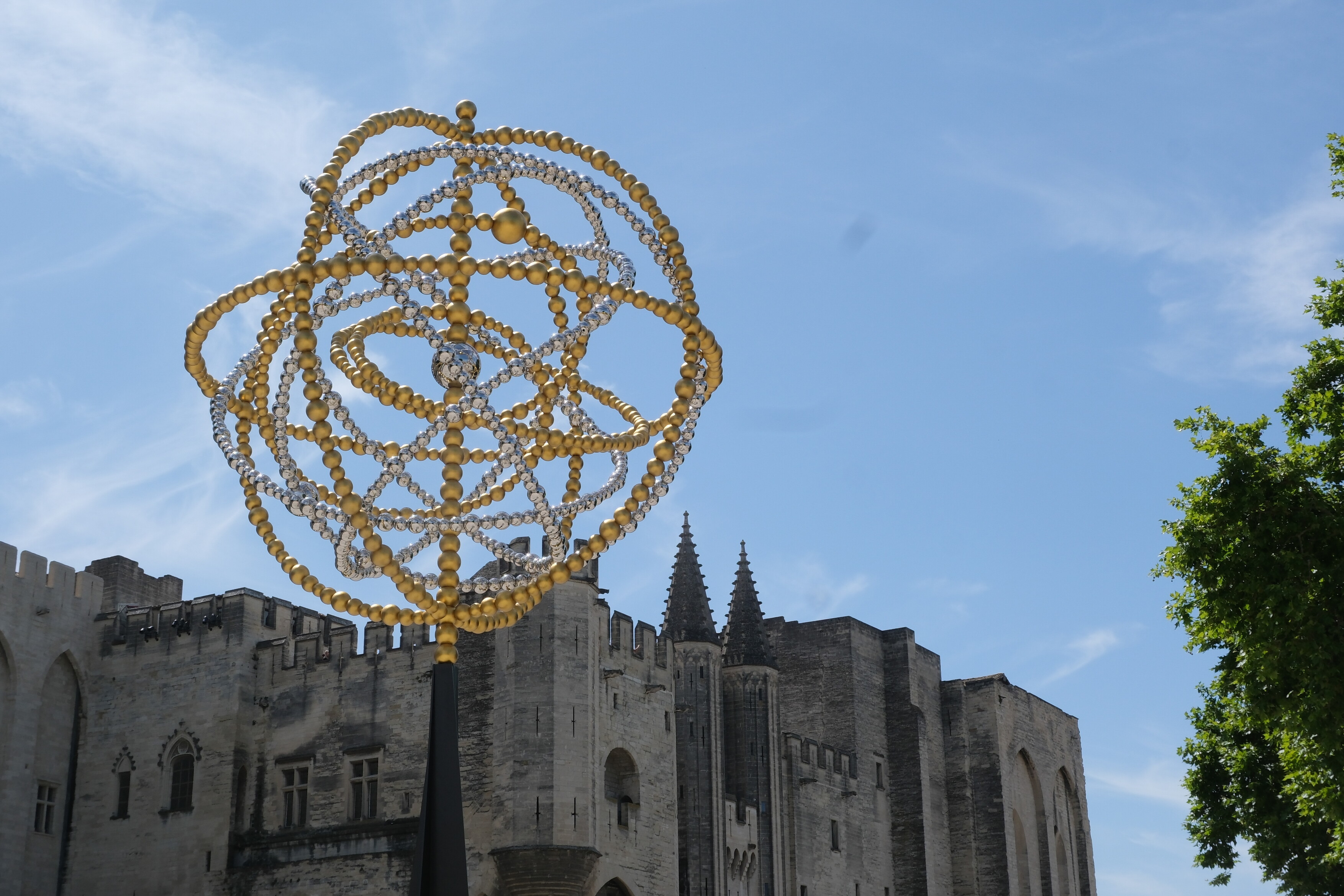 Jean-Michel Othoniel takes over Avignon for his biggest ever exhibition
Jean-Michel Othoniel takes over Avignon for his biggest ever exhibitionOriginally approached by Avignon to mark their 25th anniversary as the European Capital of Culture, Jean-Michel Othoniel more than rose to the challenge, installing 270 artworks around the city
-
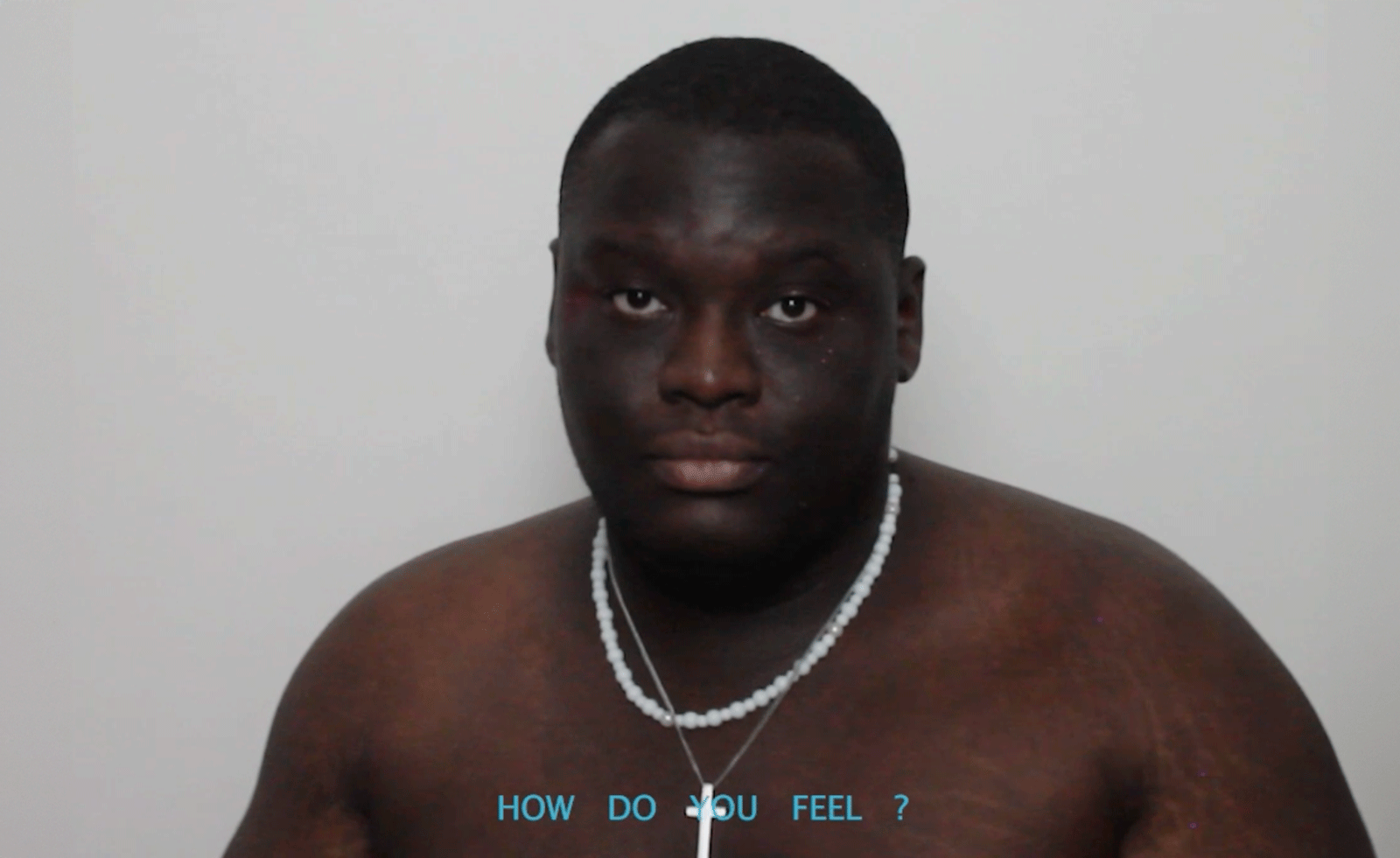 Joel Quayson’s winning work for Dior Beauty at Arles considers the theme ‘Face-to-Face’ – watch it here
Joel Quayson’s winning work for Dior Beauty at Arles considers the theme ‘Face-to-Face’ – watch it hereQuayson, who has won the 2025 Dior Photography and Visual Arts Award for Young Talents at Arles, imbues his winning work with a raw intimacy
-
 ‘With a small gesture of buying a postcard, we all become copyists’: the Louvre’s celebration of copying speaks to human nature
‘With a small gesture of buying a postcard, we all become copyists’: the Louvre’s celebration of copying speaks to human natureContemporary artists are invited to copy works from the Louvre in a celebration of the copyist’s art, a collaboration with Centre Pompidou-Metz
-
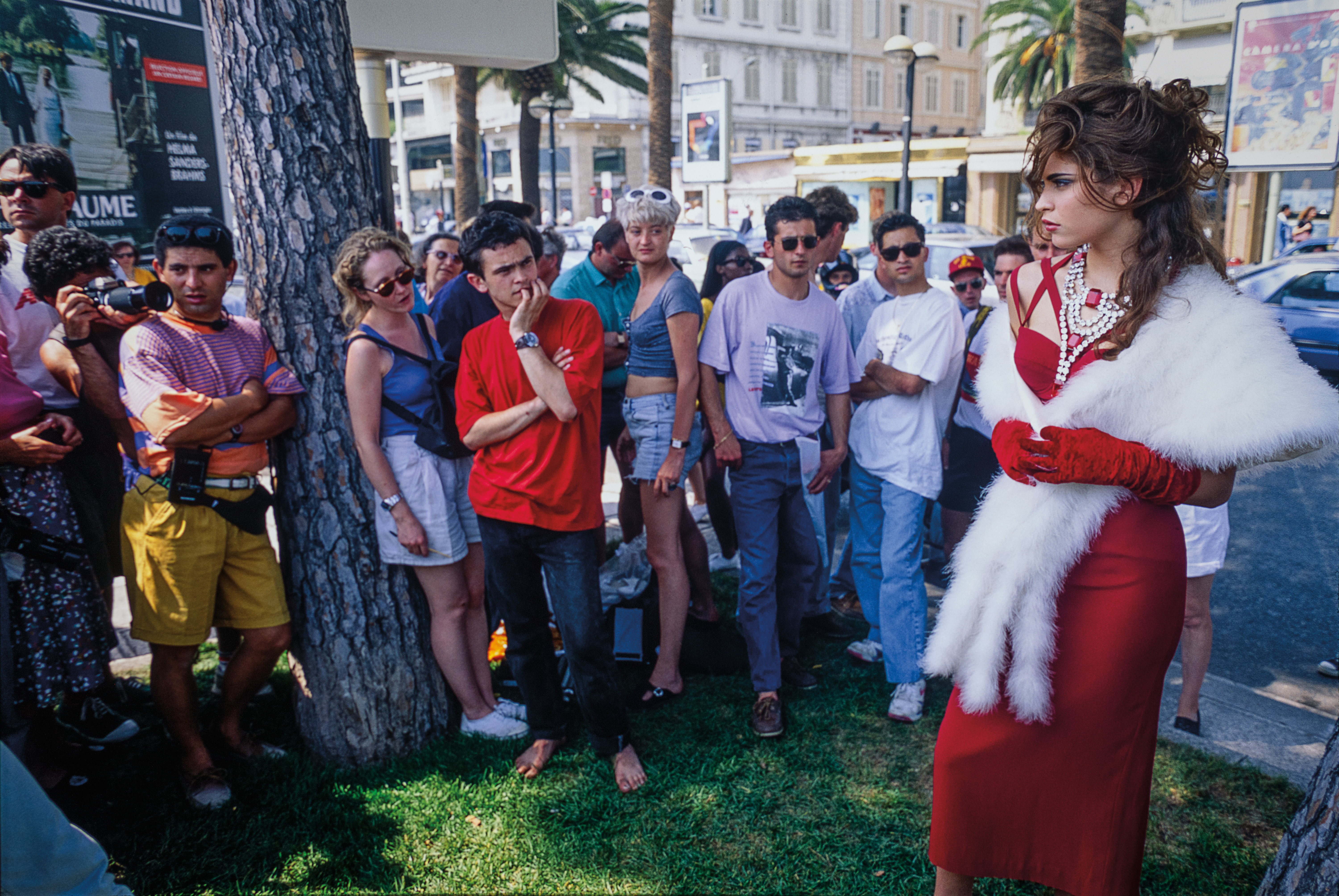 The glory years of the Cannes Film Festival are captured in a new photo book
The glory years of the Cannes Film Festival are captured in a new photo book‘Cannes’ by Derek Ridgers looks back on the photographer's time at the Cannes Film Festival between 1984 and 1996
-
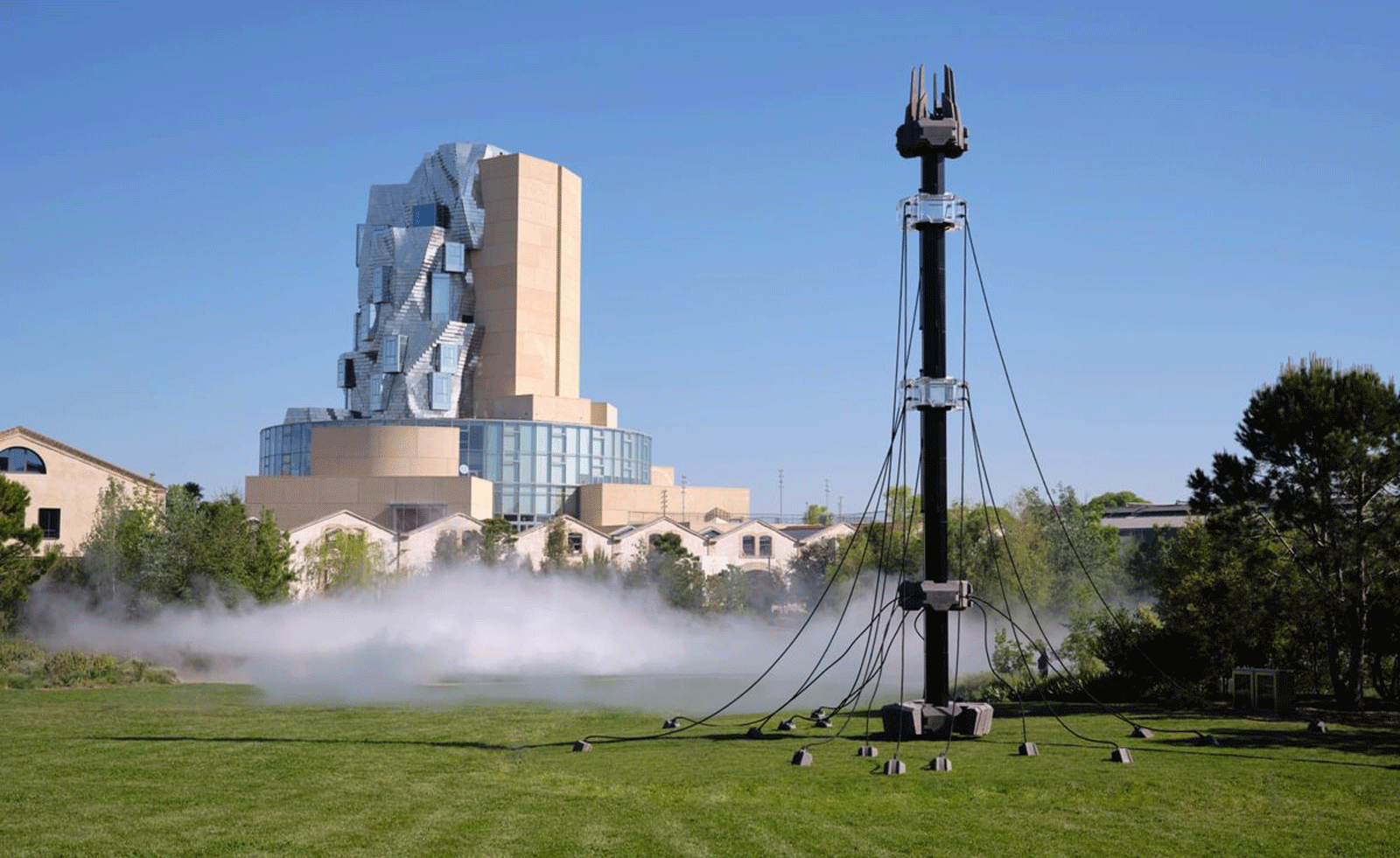 Technology, art and sculptures of fog: LUMA Arles kicks off the 2025/26 season
Technology, art and sculptures of fog: LUMA Arles kicks off the 2025/26 seasonThree different exhibitions at LUMA Arles, in France, delve into history in a celebration of all mediums; Amy Serafin went to explore
-
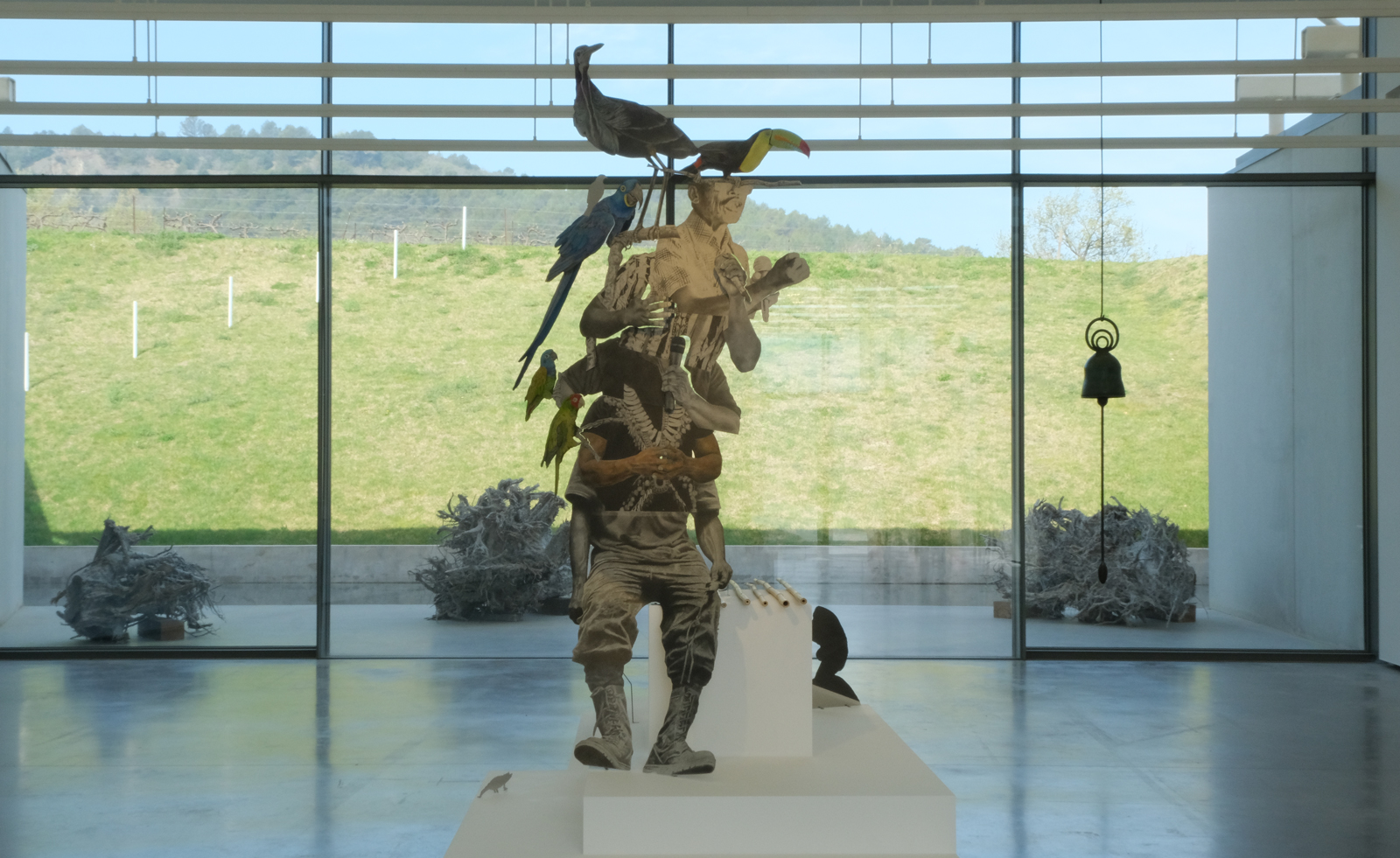 Contemporary artist collective Poush takes over Château La Coste
Contemporary artist collective Poush takes over Château La CosteMembers of Poush have created 160 works, set in and around the grounds of Château La Coste – the art, architecture and wine estate in Provence
-
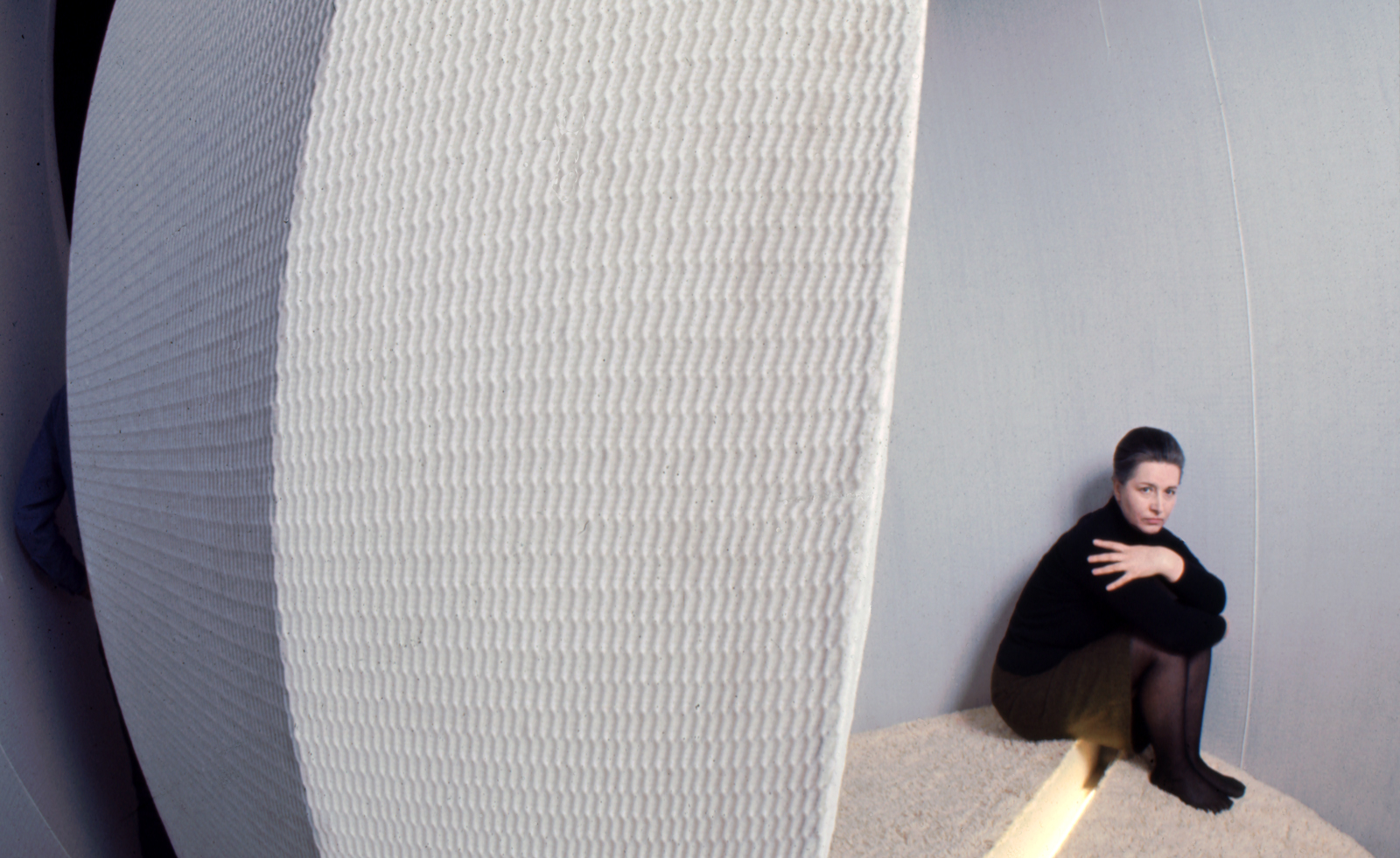 Architecture, sculpture and materials: female Lithuanian artists are celebrated in Nîmes
Architecture, sculpture and materials: female Lithuanian artists are celebrated in NîmesThe Carré d'Art in Nîmes, France, spotlights the work of Aleksandra Kasuba and Marija Olšauskaitė, as part of a nationwide celebration of Lithuanian culture
-
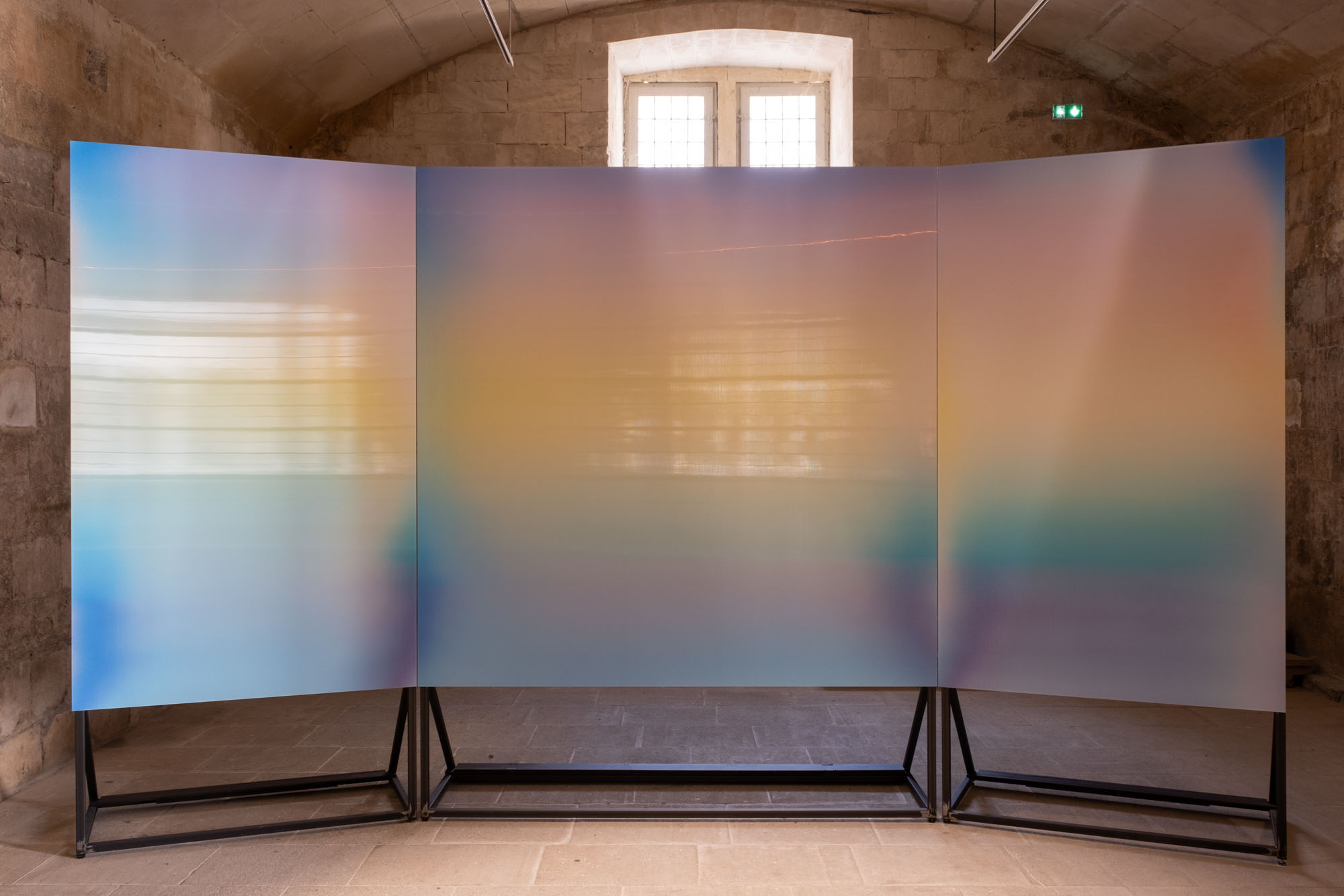 ‘Who has not dreamed of seeing what the eye cannot grasp?’: Rencontres d’Arles comes to the south of France
‘Who has not dreamed of seeing what the eye cannot grasp?’: Rencontres d’Arles comes to the south of FranceLes Rencontres d’Arles 2024 presents over 40 exhibitions and nearly 200 artists, and includes the latest iteration of the BMW Art Makers programme